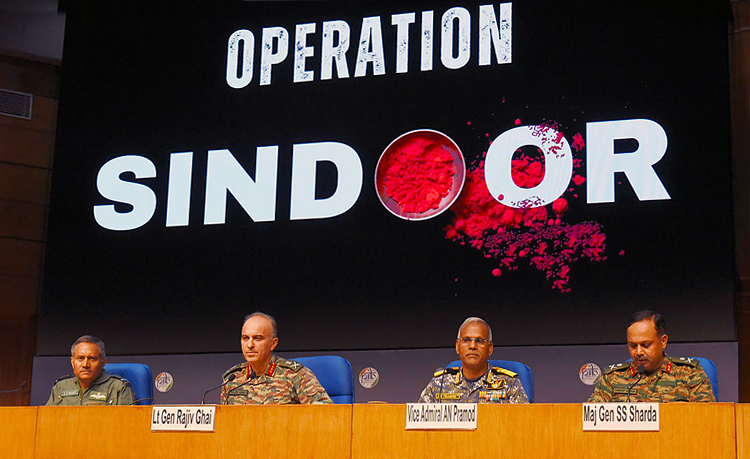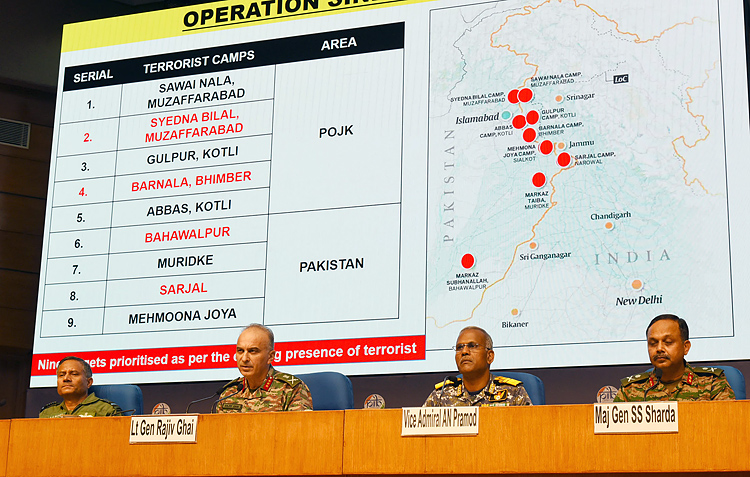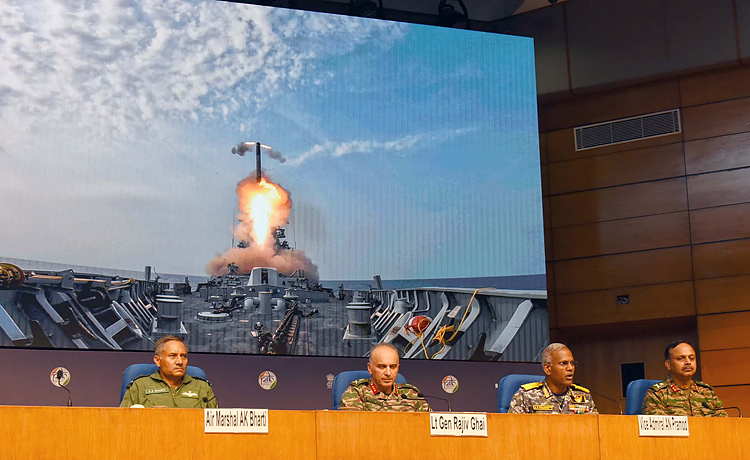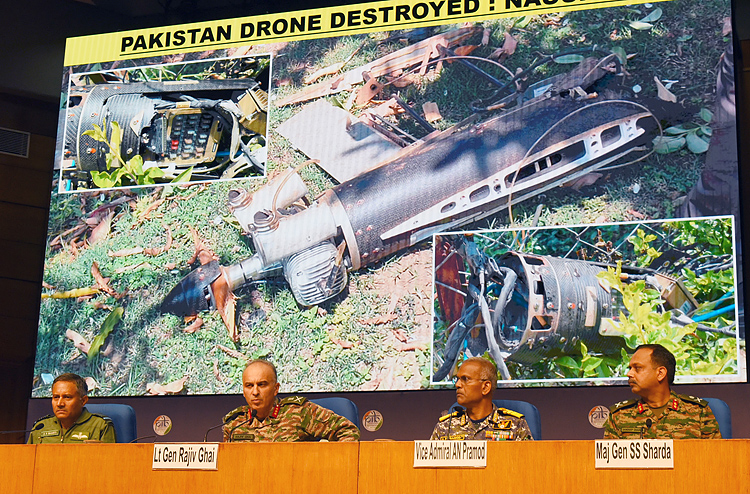INDIAN ARMED FORCES CHIEFS ON OUR RELENTLESS AND FOCUSED PUBLISHING EFFORTS

The insightful articles, inspiring narrations and analytical perspectives presented by the Editorial Team, establish an alluring connect with the reader. My compliments and best wishes to SP Guide Publications.

"Over the past 60 years, the growth of SP Guide Publications has mirrored the rising stature of Indian Navy. Its well-researched and informative magazines on Defence and Aerospace sector have served to shape an educated opinion of our military personnel, policy makers and the public alike. I wish SP's Publication team continued success, fair winds and following seas in all future endeavour!"

Since, its inception in 1964, SP Guide Publications has consistently demonstrated commitment to high-quality journalism in the aerospace and defence sectors, earning a well-deserved reputation as Asia's largest media house in this domain. I wish SP Guide Publications continued success in its pursuit of excellence.
Operation Sindoor: India strikes back with Precision and Purpose
A unified military leadership outlines doctrine of restraint and retaliation

In a notable and decisive display of tri-services coordination, the Directors General of Military Operations (DGMOs) of the Indian Army, Navy, and Air Force jointly addressed the media in the capital on Sunday evening, unveiling the details of Operation Sindoor-India's calibrated military response to last month's Pahalgam terror attack, which claimed 26 lives.
Nine terrorist camps across PoJK and Punjab obliterated in coordinated military action
Lt General Rajiv Ghai (Army), Air Marshal A.K. Bharti (Air Force), Vice Admiral A.N. Pramod (Navy) and Major General S.S. Sharda stood shoulder to shoulder at the National Media Centre, reflecting the unity of command behind the operation.
Surgical Precision Across Borders
Military officials confirmed that nine terrorist camps, located in Pakistan-occupied Jammu and Kashmir (PoJK) and Pakistan's Punjab province, were identified, surveyed, and neutralised with surgical precision.

Several of these camps, including facilities in Muridke-a known Lashkar-e-Taiba hub that previously bred operatives like Ajmal Kasab and David Headley-had been under continuous observation for weeks. Intelligence teams mapped terrain, structural layouts, and movement patterns before authorizing kinetic strikes.
Airstrikes on Terror Infrastructure
Air Marshal Bharti shared satellite visuals of airstrikes on camps in Bahawalpur and Muridke, showing collapsed rooftops and destroyed buildings.
High-value terrorists behind IC-814 and Pulwama neutralized in airstrikes
"Our surveillance and targeting were razor-sharp. Precision-guided munitions ensured minimal collateral damage," he said. "The objective was clear: eliminate terror infrastructure and operatives, not civilian or military installations."
High-Value Targets Eliminated
Lt General Rajiv Ghai confirmed the elimination of several high-value terrorists, including:
- Yusuf Azhar - mastermind behind the IC-814 hijacking
- Abdul Malik Rauf - senior Lashkar commander
- Mudasir Ahmed - linked to the Pulwama suicide bombing

Strategic Naval Support: While not directly involved in ground strikes, the Indian Navy played a critical support role, ensuring logistical coordination, precision munitions, and strategic deterrence in surrounding waters.
Drone Intrusions Repelled
Following the strikes, Pakistan intensified UAV intrusions between May 8 and 9, deploying armed drones and quadcopters along sectors from Srinagar to Nala. "We were prepared," said a senior Air Defence official. "None succeeded in damaging our assets."
Pak drone incursions thwarted; India issues stern warning after failed ceasefire
Multiple hostile drones were either jammed, intercepted, or shot down, demonstrating India's integrated air defence preparedness.

Ceasefire Offer Falls Flat
Despite these provocations, India maintained diplomatic lines. A hotline message from the Pakistani DGMO led to a proposed ceasefire at 5:30 PM on May 10. However, as expected, the ceasefire collapsed within hours as cross-border firing and drone activity resumed.
In response, the Chief of Army Staff authorised local commanders to initiate kinetic countermeasures at their discretion. "We have shown immense restraint so far," said Lt General Ghai. "But any threat to our sovereignty or civilian lives will be met with decisive force."
"Our job is to hit targets, not count body bags"
When pressed on enemy casualties, officials declined to give precise numbers. "Over 100 terrorists were neutralised," one official confirmed, adding that "numerous enemy air assets were downed or prevented." One senior officer summed up the sentiment: "Our job is to hit targets, not count body bags."
The briefing concluded with a solemn tribute to five Indian personnel and civilians who lost their lives during the operation. "Their sacrifice is eternal," said Lt General Ghai. "This nation shall remember them with pride and gratitude."
Operation Sindoor has sent a resolute message: India will not tolerate terror and is fully capable of delivering swift, precise, and coordinated military action-across domains, and beyond borders.





